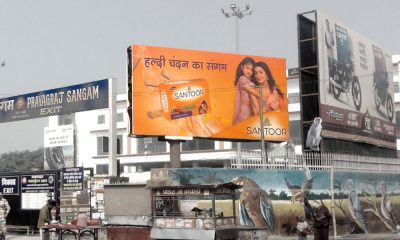Sustainability
“Stricter regulations needed for sustainable printing”
Naresh Kumar Dasari, Managing Director of MacroMedia Digital Imaging Pvt Ltd, highlights the urgent need for government mandates and increased awareness to drive sustainability in the out-of-home (OOH) printing industry.

Naresh Kumar Dasari, Managing Director of MacroMedia Digital Imaging Pvt Ltd, emphasizes the importance of government mandates and increased awareness to drive sustainability in the out-of-home (OOH) printing industry. While some progress has been made, significant challenges remain in the adoption of environmentally friendly materials and processes.
Market observations
According to Naresh, most clients opt for sustainable materials only when required by government regulations. He cites examples such as the Bengaluru Metropolitan area and Kerala, where mandates have successfully pushed businesses to adopt eco-friendly practices.
“Most clients are unaware of the ‘toxic printing processes’ used in OOH graphics,” Naresh explains. In India, solvent inks—widely used in the industry—fail to meet human health and safety standards. Meanwhile, many Western countries have transitioned to UV and GreenGuard-certified technologies, which are less harmful to both people and the environment.
Bottlenecks in the sustainability journey
One of the biggest barriers to widespread adoption of sustainable practices is cost. “The cost difference between PVC flex and non-PVC materials, as well as between solvent printing and GreenGuard-certified processes, is significant,” Naresh notes.
However, there is a silver lining: the cost gap is narrowing over time. This trend could encourage more clients and brands to adopt eco-friendly materials.
Despite this progress, other challenges persist. For example, while non-PVC materials are often marketed as recyclable, there is little evidence to show that recycling actually takes place in India. Additionally, distinguishing between toxic and non-toxic inks after production is nearly impossible. This lack of transparency further discourages clients from making the switch to sustainable options.
The way ahead for a sustainable future in OOH printing
Naresh believes that meaningful change will require action from two key stakeholders: clients and the government.
“The drive must come from the clients or through government legislation,” he says. Encouragingly, some brands are already making proactive choices to use sustainable materials, signaling an evolving ecosystem.
Still, Naresh remains realistic about the pace of change. “In my view, sustainable printing is not going to happen in a big way unless the government mandates it,” he asserts.
By introducing strict regulations and fostering awareness, both the government and industry players can pave the way for a greener future in OOH printing. Without these efforts, progress will likely remain slow and fragmented.



























